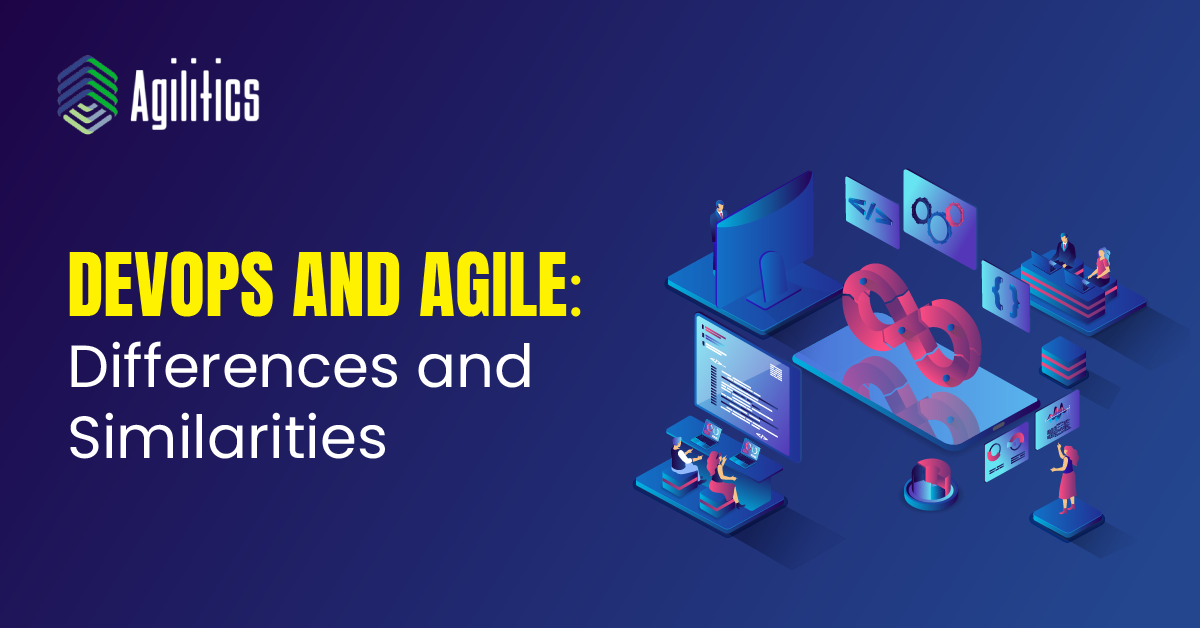Agile and DevOps are both process enablers. They help a team to build ways of working that make processes more effective, more efficient, and more satisfying. Both frameworks share similarities, but DevOps is not the same as Agile as it is often portrayed. Let’s take a look at the difference between the Agile and DevOps model.
Agile Software Development is a model of conducting software development in which teams produce working software at a rapid rate, the risk is managed through short feedback cycles, and reliability is enhanced through the adaptive planning and adaptation processes. Agile is backed by the Agile Manifesto framework that outlines its core ideas and values. There exist a plethora of frameworks like Scrum or Extreme programming (XP) to explain Agile development.
- The Agile Manifesto emphasizes that the people on devices and processes should interact
- When a company wants to implement agile, they should have an effective plan of communication
- Adopting their ideas into your working programming could produce positive results
Defining DevOps is the result of combining two phrases: development and operations. DevOps brought teams together to create a relationship between development and operational staff. Today’s companies must transform their IT teams into cross-functional organizations that can effectively produce software infrastructure, choose from available third-party software, and manage bugs. The goal is to make each component work together more efficiently as an integrated whole.
With a quick and brief description of Agile and DevOps, the following are the differences between Agile and DevOps models.
Differences
1. METHODOLOGY: Agile is about finding smart, efficient ways to get software from productivity to the market faster. DevOps practices were developed by developers who worked with large enterprise organizations, where it was important to be able to quickly release software in a matter of hours or days rather than months or years. DevOps is all about using and architecting for continuous delivery and high-velocity change. When developers working with agile can apply DevOps practices and tools, they can develop software at speed and higher quality that can be deployed quickly as part of a full infrastructure rollout, including capabilities such as data structures, cloud databases, SOA applications, web APIs, etc.
2. Team members: When you begin app development with Agile, you do not need a big team for your project. DevOps, on the other hand, demands the collaboration of different teams working together. A development team providing DevOps solutions and services is free to use any models. But when an app comes to the point where it needs to be unveiled, every team has to join together and collaborate with the deployment team to proceed further with the plan.
3. Cross Functionality versus Segmentation: Agile and DevOps work together to achieve a successful project. Both are different approaches to working on a project; agile methodology enables every team member to learn new skills so that the entire team becomes skilled in all tasks of software development. DevOps is quite different, since it requires special training for all the professionals involved in developing, testing, and distributing the application.
4. Approach to Planning: Software development processes are differentiated by their planning, development, and deployment. The Agile process uses waterfall modeling to streamline the software development process. DevOps is on the other spectrum and can streamline business operations. Each team member has a clear understanding of the team’s objectives, i.e., at first, new functionalities need to be implemented into one version, then improvise in the next release based on user feedback.
5. Documentation and Interaction: In Agile, the job is done by the development team in Sprint planning and the responsibility of releasing any new feature is shared between development and operations teams. The DevOps engineer keeps track of production environment-related updates including deployment scripts, configuration scripts, and any issues that are going on with servers. He/she also updates system status pages regularly and also tracks the progress of all issues including bugs, change requests, and features.
The DevOps engineer is involved in resolving business issues that arise as a consequence of a bug or change request. As the end-user or client, you will be able to view all available information from your server status page which can include the latest logs, full stack trace with request-id, configuration details, etc. We have dedicated engineers for each item which ensures security updates are always in place for our customers and the engineers are kept very busy for regular updates or fixes to our systems that we provide to you. We ensure to continue providing secure products and services with timely maintenance & support that helps guide you through every step.
With the above differences between Agile and devops models, there are certain similarities that the two models share.
Similarities
- The ultimate aim of both Agile and DevOps is to improve business operations and business productivity. Although the approach of both these methodologies might be different, their objective is to reach the same goal.
- From Agile to DevOps: It’s All About Communication. The bottom line is the importance of communication. It spans the whole software development lifecycle, from the moment a customer comes up with a new idea for their software until this software is used in production.
- In Agile and DevOps collaboration are one of the primary values they need to stick to to make the development process a success. Therefore, it is necessary to make considerations of Agile, as well as DevOps collaboration approach. Both the models can work together in harmony, only if they are working on the same motive.
Conclusion
Today’s organizations are full of a myriad of process, policy & procedure requirements. This is why a company should carefully consider its best-of-class Agile and DevOps approach. Collaboration models have also evolved. The Agile/DevOps team has gone beyond the water cooler to come up with blended project approaches. In the Lean & Agile space, the main focus is on value-based decision making; in the DevOps space, automation is recommended as the first choice for any given delivery mechanism: A combination of various methods usually leads to a more flexible organization with high velocity but low cost.
We strive to provide business professionals with the skills and knowledge necessary to increase work performance and drive greater return on investment for the global customers we support. Agilitics delivers customized technology and management training solutions to large corporations and government agencies around the world.


